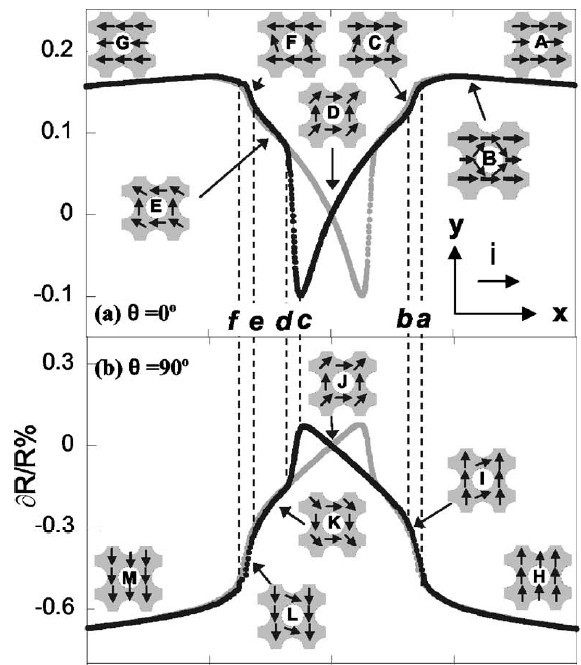Domain Wall Pinning in Ferromagnetic Nanostructures  The magnetization reversal process in ferromagnetic materials is known to depend strongly on the presence of a range of defects which can serve both as domain nucleating centers and as pining centers. In the absence of an external field, the domain wall tends to be trapped by inhomogeneities in order to minimize the wall energy. The main difficulty with conventional studies is that the precise defect structure is unknown. Using nanotechnology, precisely controlled defects were introduced into a homogenous magnetic film. These controlled defects introduce dipolar fields which compete with the intrinsic anisotropy field of the film. We have: The magnetization reversal process in ferromagnetic materials is known to depend strongly on the presence of a range of defects which can serve both as domain nucleating centers and as pining centers. In the absence of an external field, the domain wall tends to be trapped by inhomogeneities in order to minimize the wall energy. The main difficulty with conventional studies is that the precise defect structure is unknown. Using nanotechnology, precisely controlled defects were introduced into a homogenous magnetic film. These controlled defects introduce dipolar fields which compete with the intrinsic anisotropy field of the film. We have:
- Shown experimentally that antidot array structures can be used for information storage with bits trapped between consecutive holes along the intrinsic hard axis of the magnetic materials. One main advantage of antidot structures is that the system can overcome the superparamagnetic limit of isolated magnetic dot arrays, and preserves the properties of the magnetic film, which makes it a promising candidate for ultra high density storage.
- Demonstrated that magnetotransport is a powerful and sensitive technique for mapping the magnetization reversal process in complex antidot magnetic structures. We have also shown that the convectional anisotropic magnetoresistance theory breaks down for antidot structures of certain geometry.
- We have also investigated the exchange bias effect in antidot arrays. We observed a relatively small degree of asymmetry in the magnetization reversal process of antidot arrays as compared to a continuous film of identical composition due to the configurational anisotropy of the antidot arrays and the competition between interfacial ferromagnetic-antiferromagnetic (FM-AFM) exchange anisotropy and FM uniaxial anisotropy. The strong interplay between thermal activation effects and AFM domain size confinement in the antidot arrays results in the exchange bias field being either smaller or larger than the continuous film depending on the temperature.

Further readings:
- D. Tripathy and A. O. Adeyeye, New Journal of Physics 13, 023035 (2011).
- D. Tripathy, P Vavassori, J M Porro, A. O. Adeyeye, and N. Singh, Applied Physics Letters, 97, 042512 (2010)
- D. Tripathy, A. O. Adeyeye, and N. Singh, Applied Physics Letters 93, 022502 (2008)
- C. C Wang, A. O. Adeyeye and N.Singh, Nanotechnology 17 1629-1636, (2006)
- C. C Wang, A. O. Adeyeye and N.Singh, Applied Physics Letters 88, 222506-1 to 222506-3 (2006)
- C. C. Wang, A. O. Adeyeye, N. Singh, Y. S. Huang and Y. H. Wu, Physical Review B, Vol. 72, 174426, (2005)
|

